Join the VIP Teacher Club!
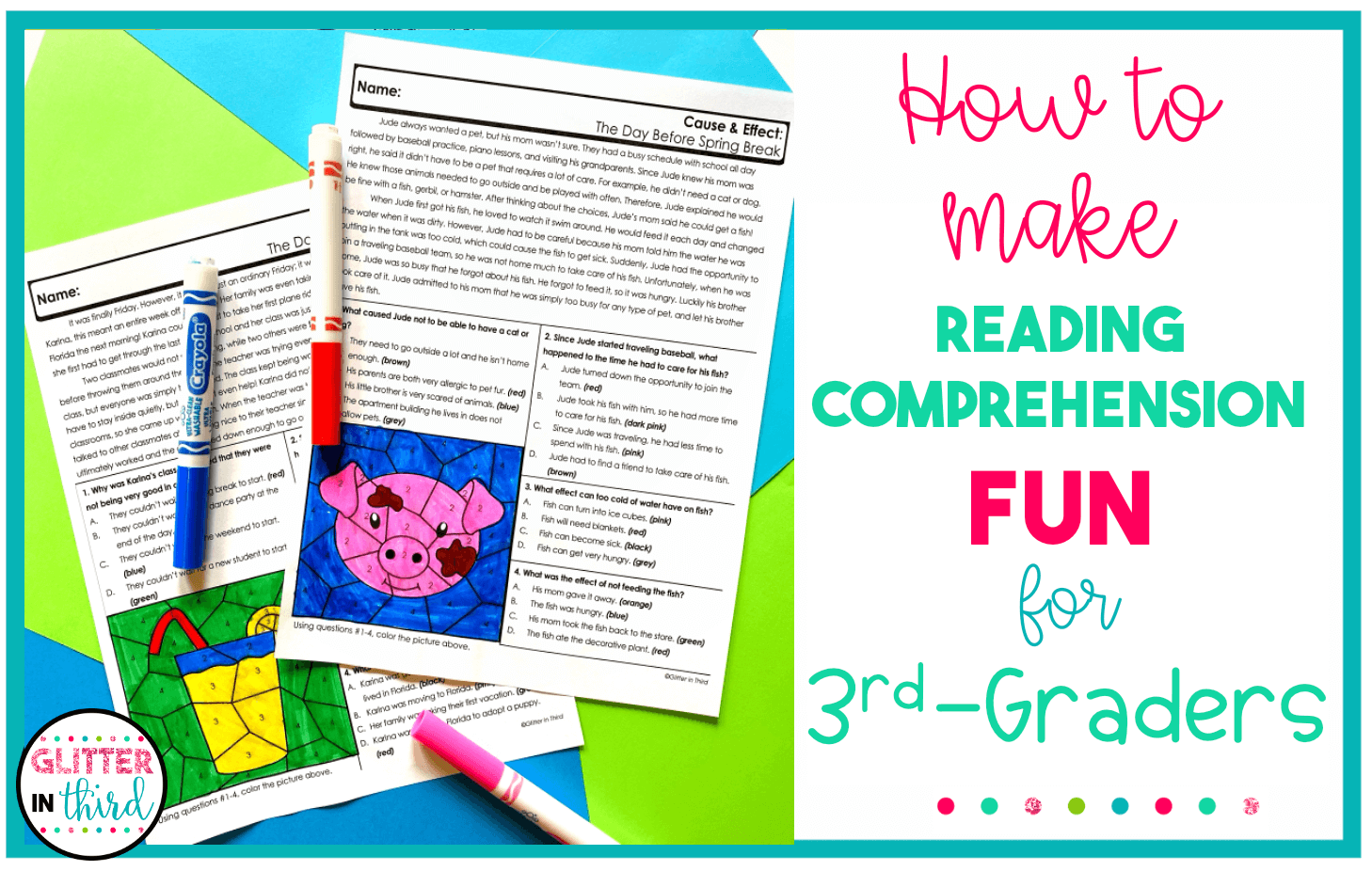
If you’ve ever heard your 3rd graders groan after saying, “Time for reading comprehension,” you’re not alone. While it’s a crucial part of 3rd grade instruction, it can sometimes feel repetitive or frustrating—for both students and teachers. But the good news? Reading comprehension doesn’t have to be boring. With the right tools and strategies, it can become one of the most engaging parts of your day.
Here are practical, teacher-approved ways to make reading comprehension fun for 3rd graders—without sacrificing academic rigor.
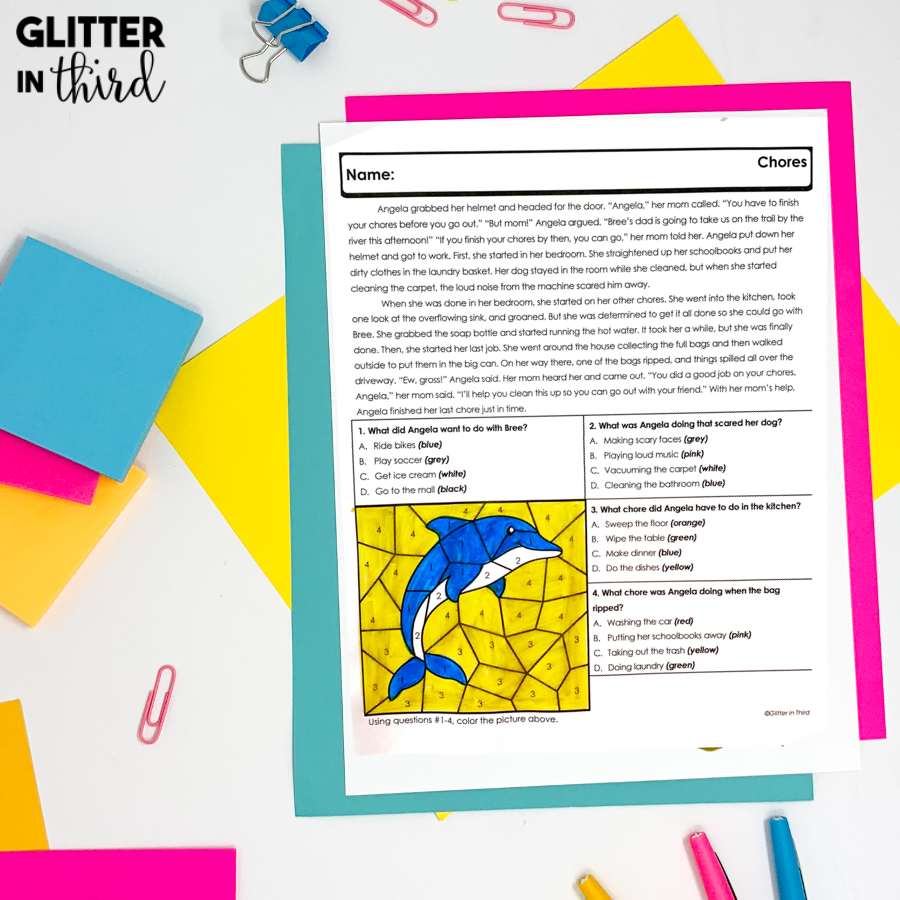
3rd graders love to express themselves creatively, and tying art into literacy can instantly boost engagement. One of the easiest ways to do this is with Color by Number Reading Activities.
These combine short, focused reading passages with comprehension questions. As students answer correctly, they unlock parts of a picture to color in. It’s like sneaking vegetables into a smoothie—they’re doing meaningful comprehension work, but it feels like a reward.
I created a set of Color by Number Reading Strategy Passages specifically for this purpose. They cover strategies like main idea, sequencing, context clues, and character traits, and are designed to be low-prep and self-checking. Teachers love using them for centers, early finishers, and review days—especially when attention spans start to fade.
Kids weren’t made to sit still all day, and comprehension doesn’t need to happen at a desk. Try using scavenger hunts, “Read and Match” gallery walks, or even classroom corners where each wall represents a different comprehension question. As students rotate, they read parts of a passage and answer in teams or pairs.
This simple shift keeps students engaged and makes the reading process feel more interactive.
Games make everything more fun—especially when there’s a little friendly competition. Consider adding:
If you’re looking for ready-made games, my Reading Strategies Jeopardy Games are a class favorite. Each version focuses on a different skill—like main idea, context clues, or sequencing—and includes interactive questions that get kids thinking and laughing as they play. They’re perfect for review days, literacy centers, or even test prep in disguise!
The truth is, kids don’t want to read something they can’t connect to. Choose texts that reflect their lives, interests, and personalities. Funny stories, animal facts, seasonal themes, or even short mysteries can make a big difference.
When they’re curious about the topic, they’re much more likely to stay focused and think critically about what they’re reading. Mix in fiction and nonfiction to keep it fresh, and don’t shy away from rereading—it reinforces comprehension and builds confidence.
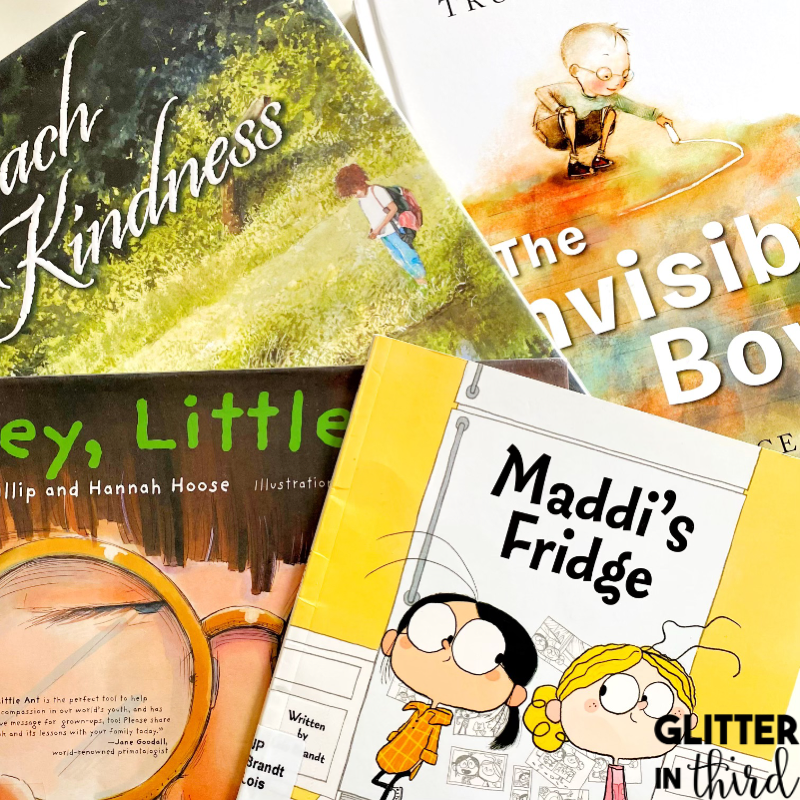
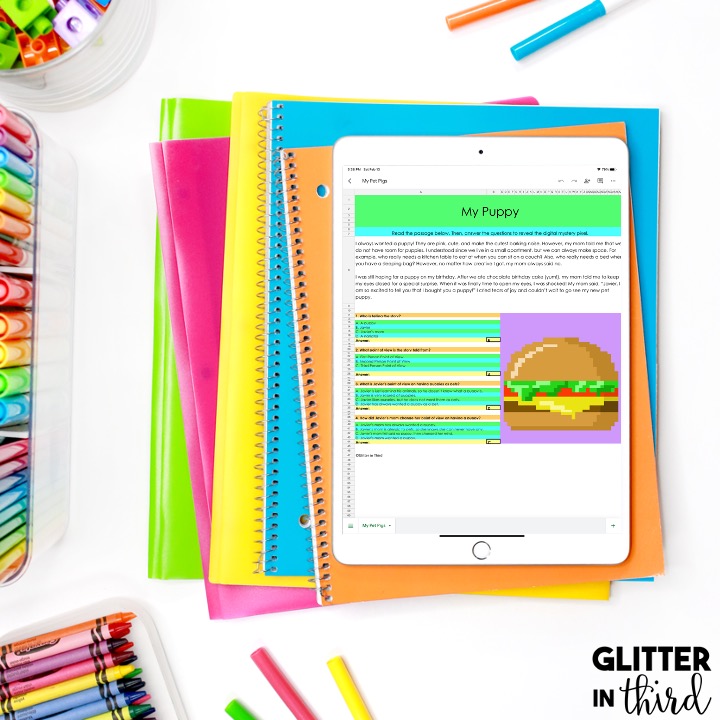
If your students light up when the Chromebook carts come out, lean into it. Platforms like Google Slides™, Boom Cards™, and Google Forms™ can bring reading to life with interactive highlighting, drag-and-drop sequencing, and auto-graded quizzes.
Try digital versions of your favorite reading strategies—many of the Color by Number Reading Strategy Passages in my shop also come in digital formats (like reading comprehension digital pixel art!), so students can complete them on a device and still reveal the mystery image as they go.
When students know what to expect, they’re more likely to buy in. Build reading comprehension into your weekly routine with a mix of:
By giving students multiple ways to approach the same skill, you’re reinforcing it in ways that work for all learners.
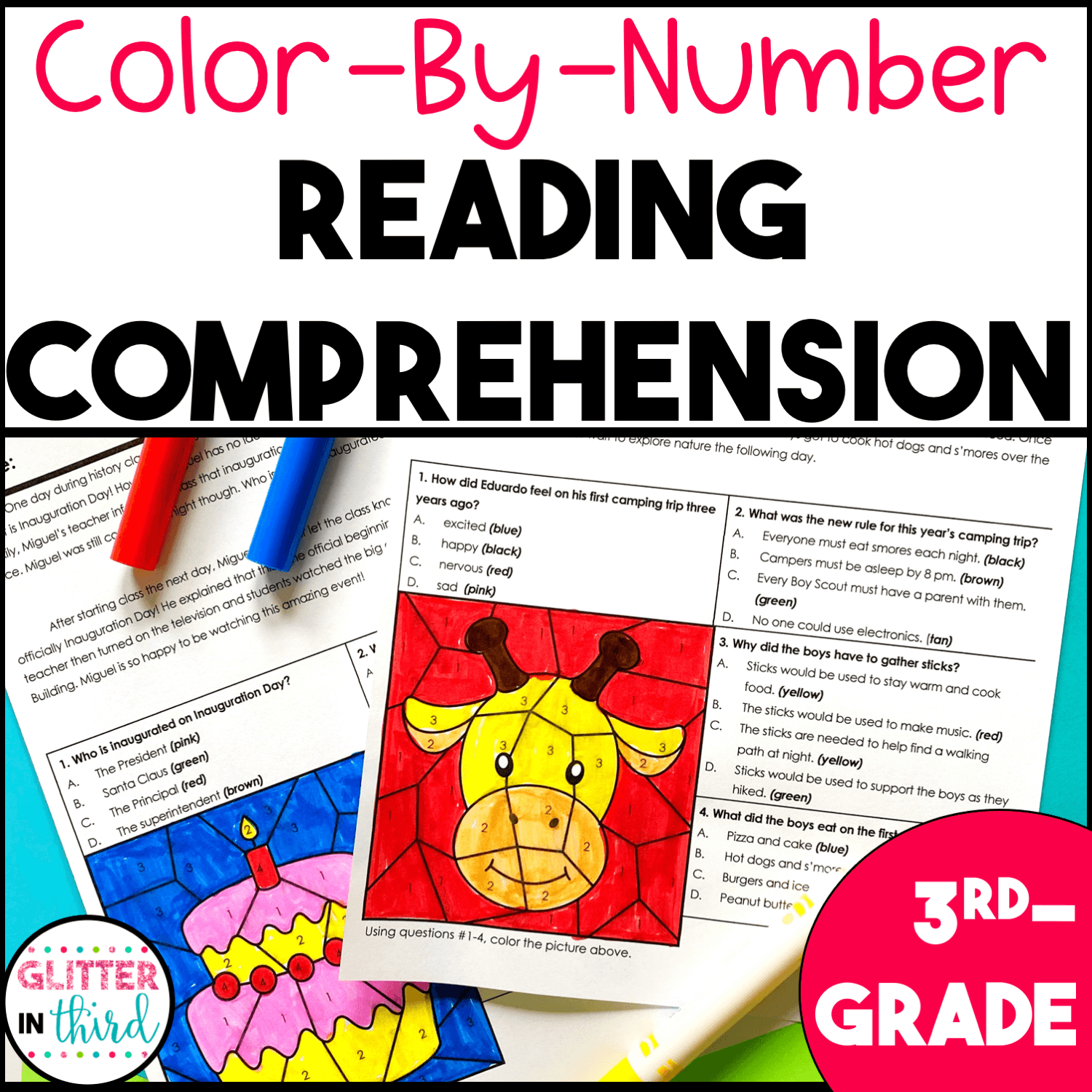
Making reading comprehension fun doesn’t mean making it fluff. The goal is still to help students grow as readers—but if they’re enjoying the process, they’ll retain more and participate more fully.
If you’re looking for an easy way to start, my Color by Number Reading Strategy Passages are perfect for 3rd grade teachers who want meaningful review without the daily prep. They’re great for independent practice, early finishers, centers, or even sub plans—and they cover a wide range of strategies with clear, consistent formatting.
Final Tip: Don’t Be Afraid to Switch It Up
Even your favorite activity can get stale if it’s overused. Keep things fun by rotating between movement, coloring, tech, discussion, and reading. A little variety goes a long way in keeping kids engaged and excited to grow as readers.
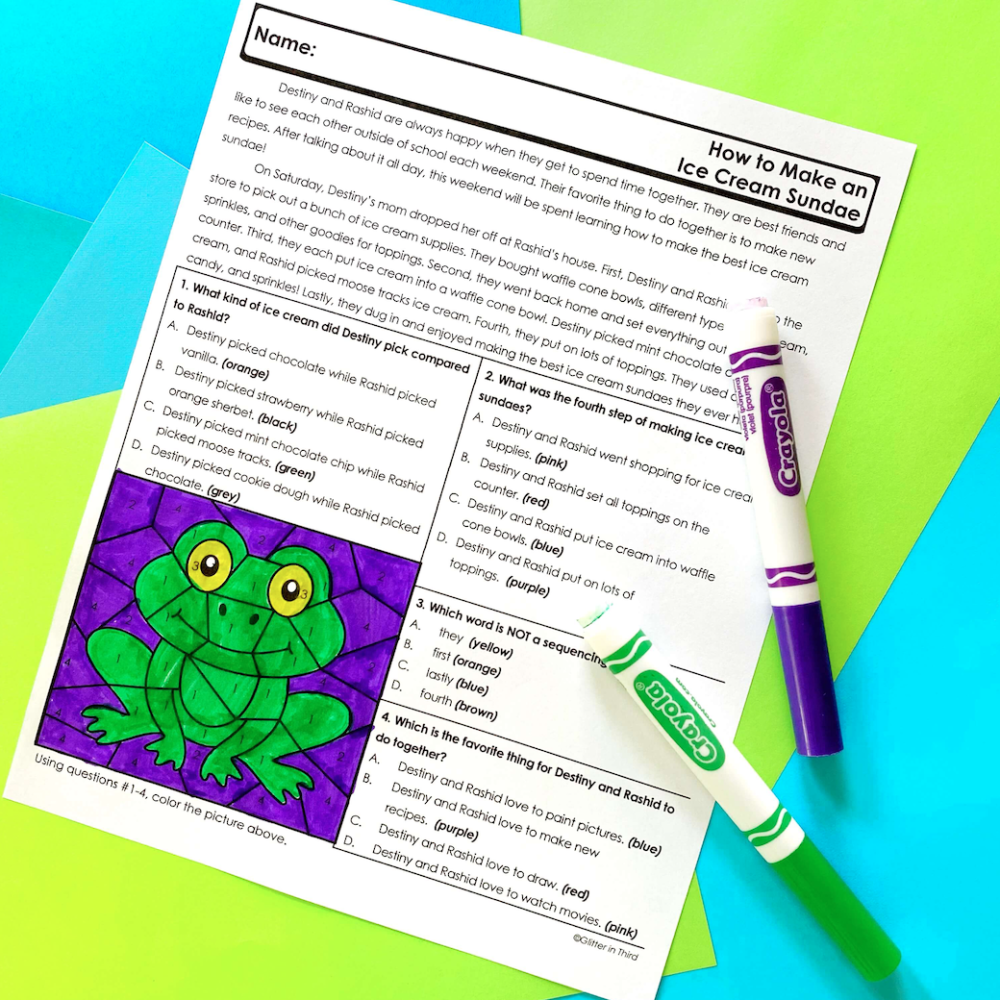
I have a FREE reading comprehension worksheet for you! It’s a color by number reading passage.
(You can learn more about these HERE!).
Leave your name and email below to get it sent immediately to your inbox!

Hey there, I’m Kelly! I I love helping teachers save time with technology and resources so they have more hours in the day to spend with family and friends. Take a look around to find new ideas that you can implement in your classroom today!